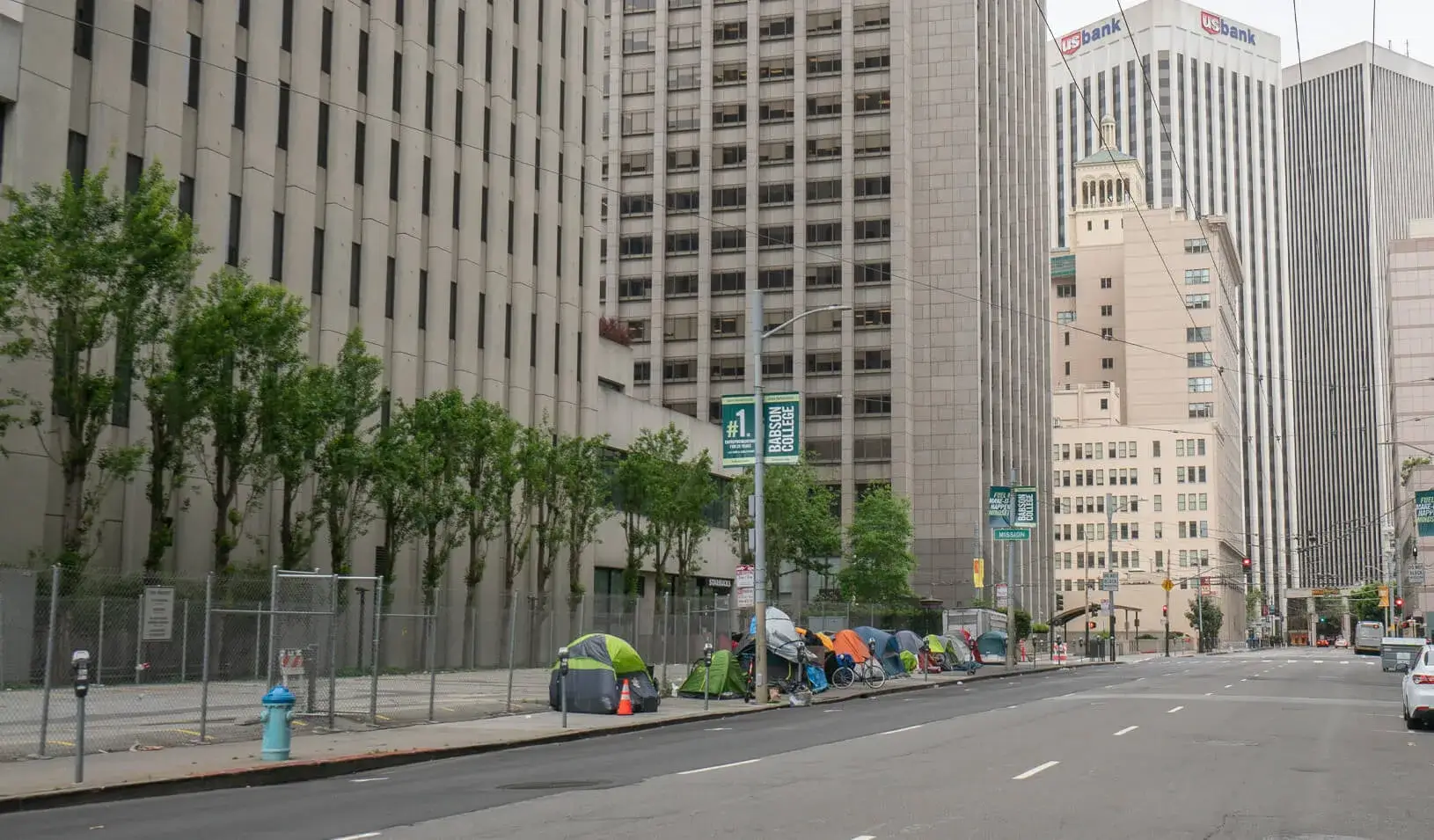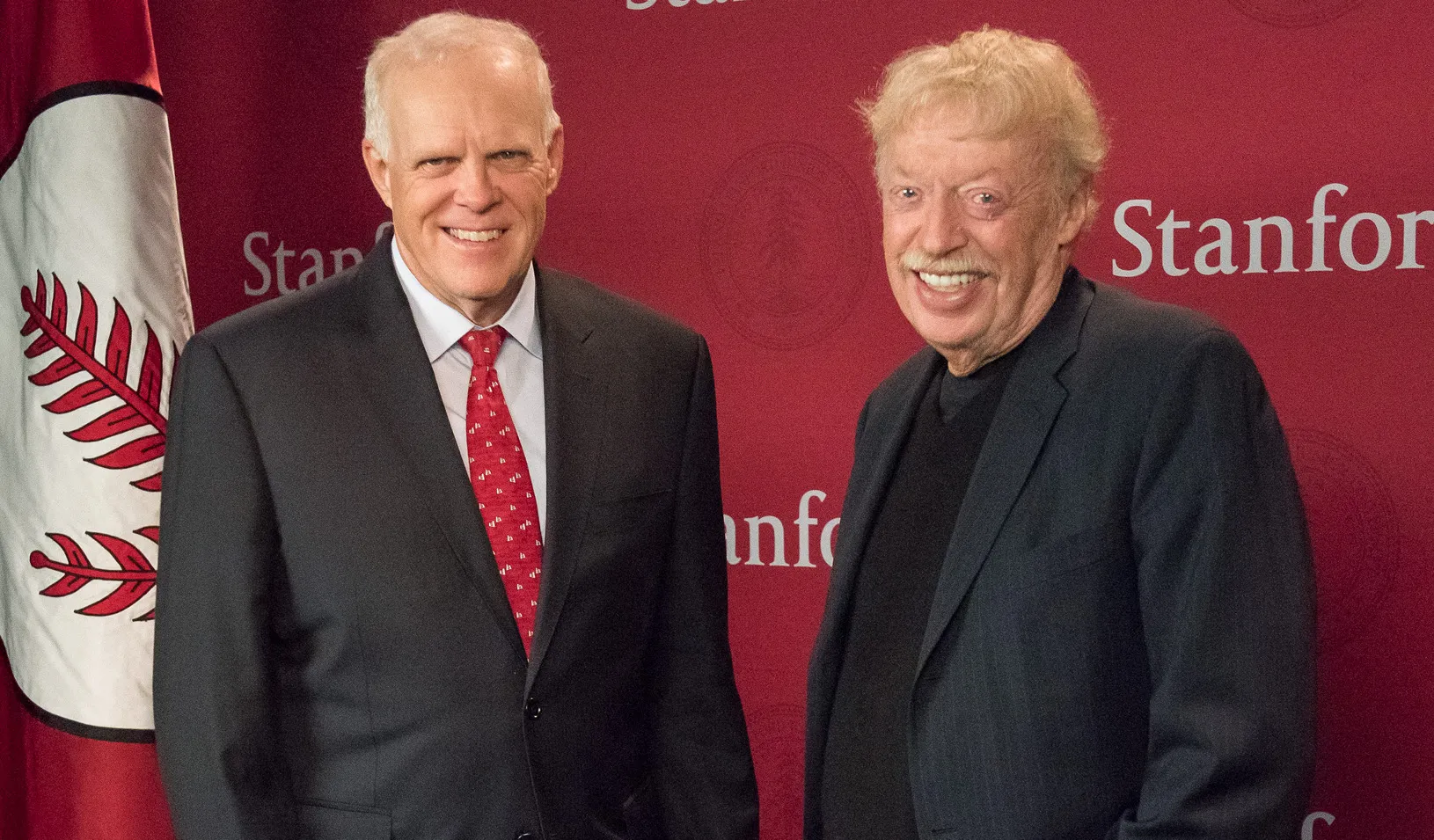Want to Fix Homelessness? Students Followed the Data — When They Could Find It
Students in the Stanford GSB public policy lab present recommendations to legislators.
August 05, 2022

Roughly one third of the homeless population in the United States lives in California. | iStock/DianeBentleyRaymond
When Rob Keene was living in the Haight-Ashbury neighborhood in San Francisco, the raw reality of homelessness was evident every day. All around him, unsheltered people, often suffering from mental illness, drug addiction, or both, struggled to stay safe and stay alive. Keene, MBA ’22, saw some of them at the food bank where he volunteered. So when he heard that Stanford GSB finance professor Joshua Rauh was offering a public policy lab on the topic of homelessness last spring, he jumped.
Back to Class
In this ongoing series, we bring you inside the classroom to experience a memorable Stanford GSB course.
“My motivation for coming to the business school in the first place was around affordable housing and homelessness,” says Keene, a structural engineer. “This was an opportunity to build my understanding about where the problem comes from and to do something about it.”
The problem is large. There are an estimated 553,000 homeless people in the United States, according to the Department of Housing and Urban Development, and roughly a third of those are in California. In Los Angeles alone, more than 40,000 people are unsheltered, and encampments have sprouted all over the city. Homelessness has become the biggest political issue in the state, says Rauh, influencing mayoral priorities, legislative agendas, and election campaigns, including that of California Gov. Gavin Newsom. And where there is attention, money follows — the state has budgeted more than $13 billion to address homelessness over the past three years.
Unfortunately, says Rauh, nobody can say for sure where that money went, or how much good it did. “Politicians want to show that they’re doing something because voters are fired up about this issue,” he says. “Spending money without accountability, however, is part of the reason we are in the situation that we are now. Not enough data-focused discipline has been brought to the question of what the state should be doing.”
Hoping to engage students in addressing that issue, Rauh developed the course “Homelessness in California” as part of Stanford GSB’s Action Learning Program. (ALP was established in 2019 to support immersive, project-based courses.)
Rauh drew on his ample network in policy circles to bring 13 guest speakers to the class, including researchers, experts, and government officials. One of those, California assembly member Robert Rivas, arranged for the students to present their proposals to legislators and staff at a meeting in Sacramento.
Tackling a topic as complex as homelessness in one quarter of study is daunting at best. “One of the questions I had coming into the course was how much could we realistically accomplish on an issue that so many others have worked on,” Keene says. “But it became clear right away that, one, there’s still a lot of research to be done, and two, there is no consensus on what is working, in part because there is not enough data to draw those conclusions.”
The students produced an 85-page report that focused on three areas: mental health and wellness, housing policy, and community. “We are not pure researchers, we’re not experts in this field, and so the place where we could add value was in synthesizing some of that research and translating it into a format that was easily digestible for policymakers,” says Mathew Madsen, MBA ’23. “The framework that we used was ‘what is the data saying?’ And then identifying areas where there wasn’t enough data.”
Among the recommendations:
- Increase transparency and accountability surrounding homelessness services and their funding. “California must prioritize the collection of comprehensive data by requiring every homelessness service provider that receives funding from the state… to report data at least quarterly.”
- Expand the use of contingency management for substance abuse. “Drug deaths plague California’s homeless population, and treating substance use disorders is crucial for ensuring better long-term outcomes for those experiencing homelessness.”
- Encourage enforcement of existing laws to shut down open-air drug markets and unsafe encampments. “Allowing the state’s most vulnerable citizens to live on the streets in dangerous conditions where lethal drugs are easily accessible is not a humane response to homelessness.”
- Reform restrictive zoning laws and streamline the development process for homebuilders. “California must increase its housing supply to lower the cost of living in the state.”
Rauh and the students met for two hours with more than a dozen state legislators and staff in Sacramento. “They were very interested in what we had to recommend to them,” Rauh says. “We certainly heard from legislators who were interested in putting some of this into a legislative package for the next session.”

Students presented their report to a group of state legislators and staff. | Dean W. Ball
The opportunity to insert their ideas into a real-world policymaking arena was a satisfying capstone to the course, Madsen says. “That was a really interesting experience, something I had never done before.” And although he will be at Harvard’s Kennedy School this fall, Madsen wants to follow up to see whether some of the proposals can make it into law. “I would love to stay engaged and I know that Josh is definitely planning to stay engaged with the legislature on this topic,” he says.
The course was another validation of the value of the ALP model, Rauh says. “I believe very strongly that this was a great success as an educational exercise. As we do more ALP public policy labs in the future, we will be able to hone the experience even further.”
For media inquiries, visit the Newsroom.
Explore More
Maker: United Record Pressing

Phil Knight Honored with Uncommon Citizen Award

Catherine Roberts Joins Stanford GSB as CCMO
